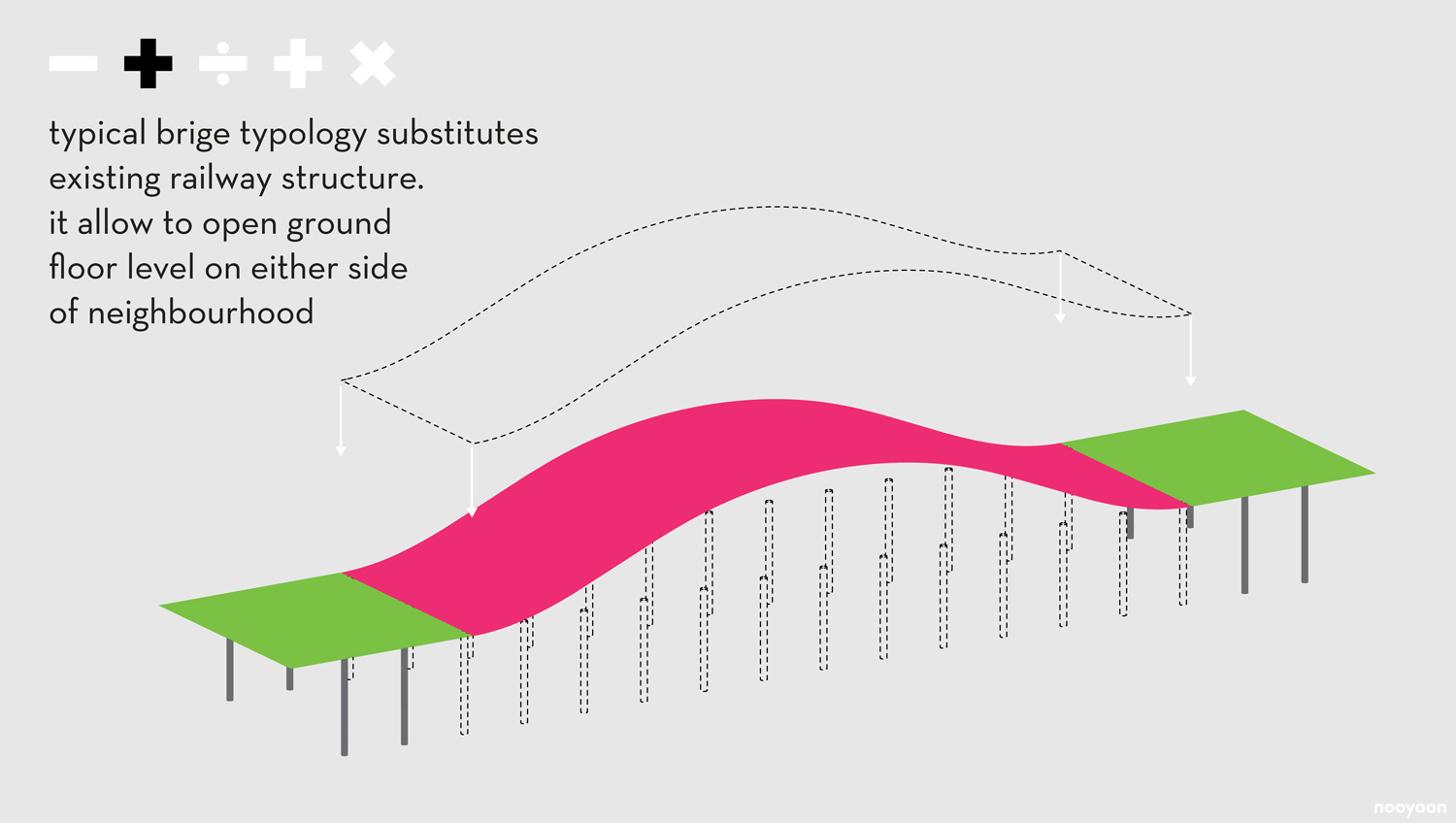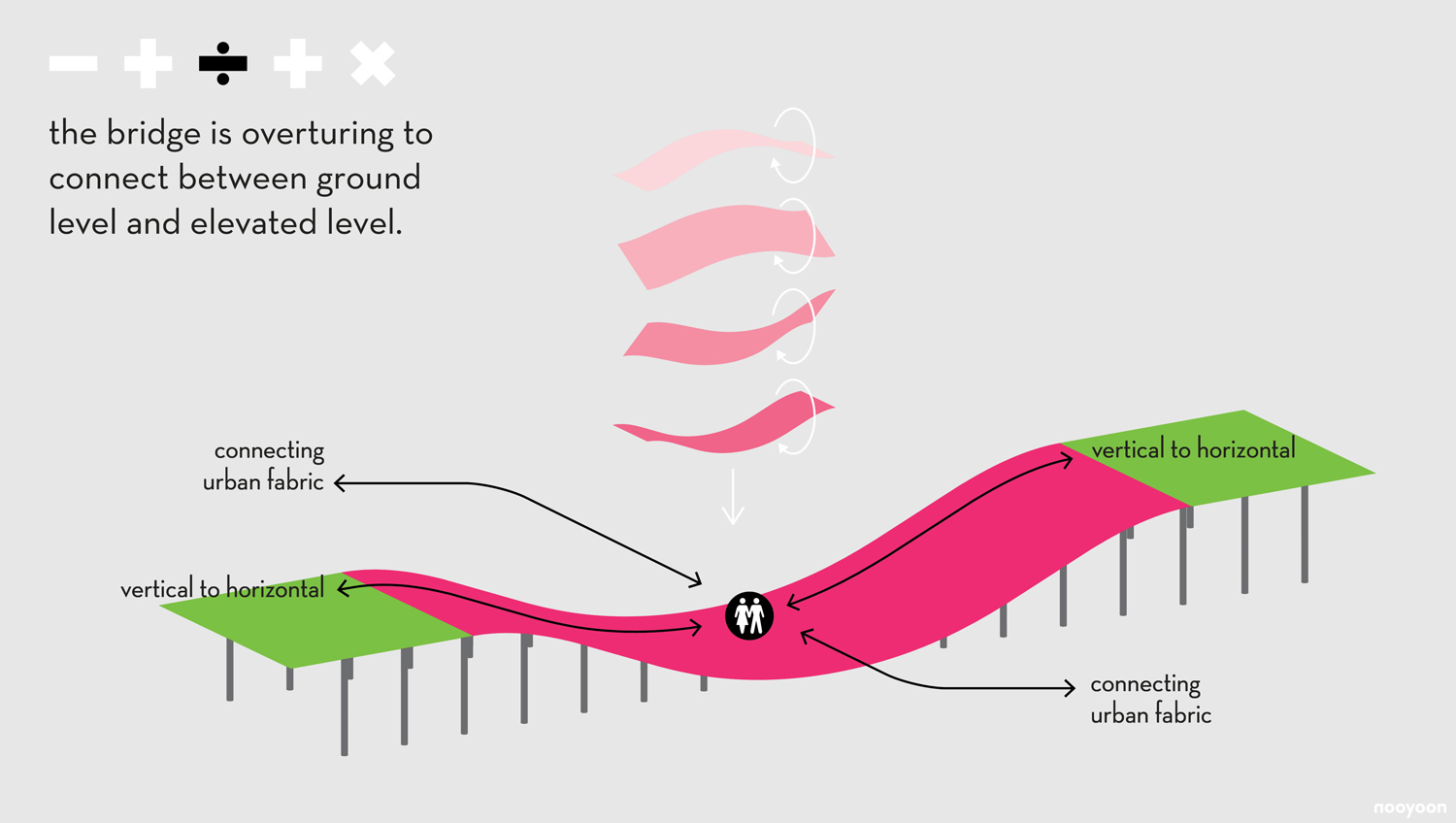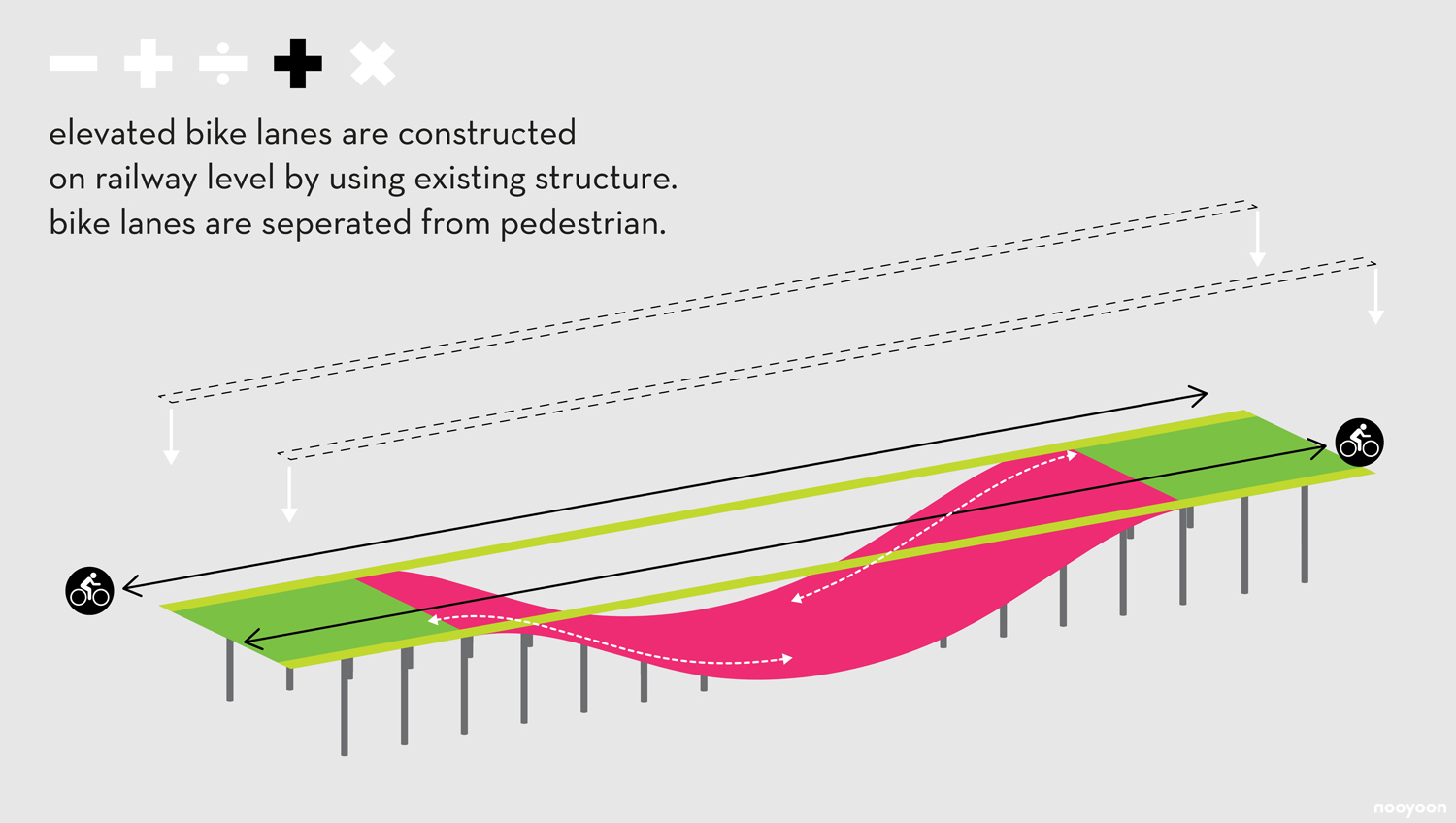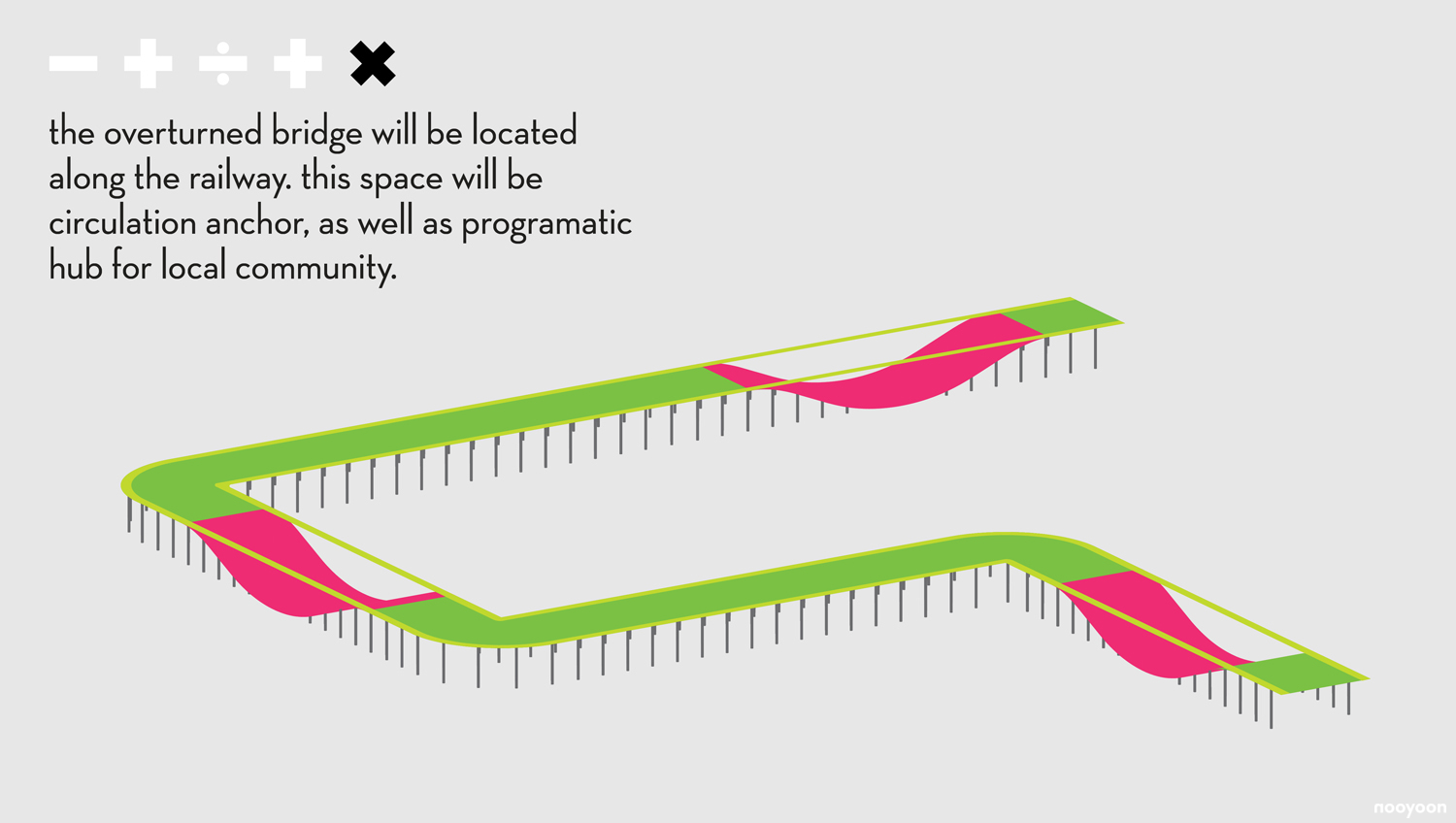An abandoned railway is the last piece of urban interstitial unproductive space in New York City. It is a void and a wall that separates two urban fabrics. The Queenway is one of the abandoned railways in the city located in Queens. The Queensway once represented connection and productivity, but now, it is just a hollow urban infrastructure. New York, has a good precedent of abandoned railway redevelopments, the High Line. The Queensway and the High Line are similar in their physical condition. But their neighbourhoods are quite different. The High Line is located in one of the busiest and touristy areas in Manhattan, while the Queensway is located in a local residential community. Thus, the Queensway has to blend existing local communities physically and programmatically, and provide space to revitalize the local community and invigorate the everyday life of its neighbourhoods. The project “Upside Down Bridge” proposes an overturned bridge be used to connect ground condition and vertically isolated space. By transformed typology, the project creates a vague relationship between horizontal and vertical conditions. The Upside Down Bridge opens up the visual and physical corridors between two urban fabrics, and at the same time, creates a smooth transition from the ground to the railway. The intersection between this vertical and horizontal connection, called “The Plaza”, will be used as a versatile public space. The Plaza will accommodate many people and programs, and mingle diverse cultures and people from the neighbourhood. The Kitchen Garden located on the hill can provide an urban farming experience to the community, and the community center on the ground floor will provide space for indoor programs. In addition, “Upside-Down Bridge” will be reproduced at several locations from the Southern section to the Northern section of the railway to help activate local communities. The bridge is a linear structure, nevertheless it will be an excellent catalyst to tie disconnected urban areas.











